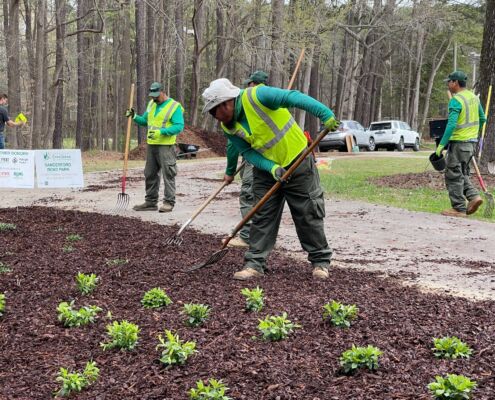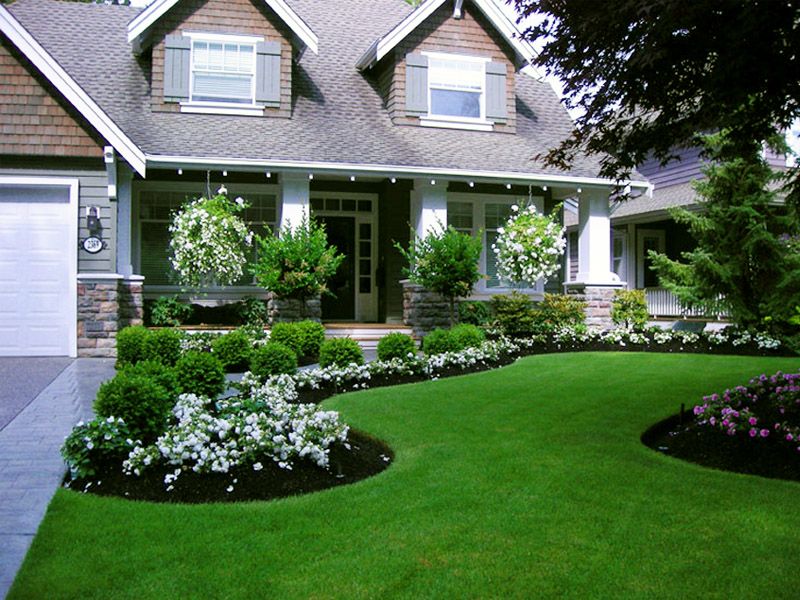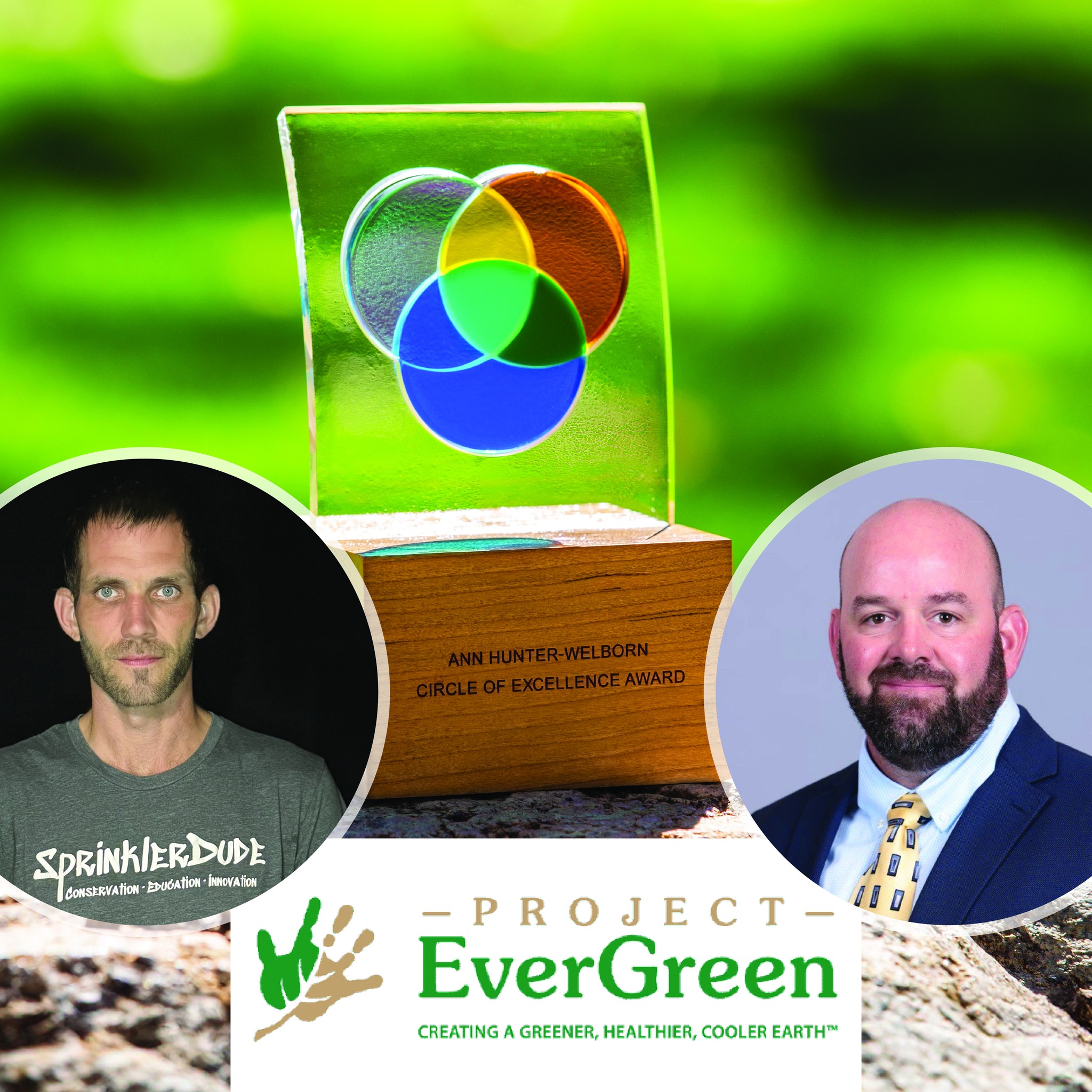Reducing Heat Islands in Cities
Reducing urban heat islands involves various strategies to mitigate the excess heat absorbed and retained by buildings, roads, and other infrastructure.
Project EverGreen’s GreenCare for Communities initiative revitalizes urban green spaces to help reduce heat islands. We’ve completed projects across the United States restoring nearly 200 million square feet of healthy green space since 2008.

Those efforts have not only cooled temperatures in neighborhoods from Detroit and New York City to Cleveland and Phoenix, but that heathy green space also generates clean air for 320,000 people to breathe daily.
How to Reduce Heat Islands
What can be done to reduce heat islands in communities? Here are some effective approaches to be considered. Implementing these strategies requires collaboration between governments, communities, architects, and urban planners to create more sustainable and livable cities.
Increase Vegetation and Green Spaces
- Urban Greening: Planting trees, creating parks, and establishing community gardens can lower surface and air temperatures by providing shade and releasing moisture through evapotranspiration.
- Green Roofs: Installing vegetation on rooftops can significantly reduce heat absorption. Green roofs also provide insulation, reduce stormwater runoff, and improve air quality.
- Green Walls: Vertical gardens on the sides of buildings help cool the air and reduce the heat absorbed by building surfaces.
Urban Forestry and Tree Planting
- Street Trees: Planting trees along streets can provide shade and cool the air, reducing the need for air conditioning in nearby buildings.
- Tree Ordinances: Implementing policies that require tree planting and maintenance can sustain urban forests and contribute to long-term cooling.
Public Awareness and Education
- Community Programs: Educating the public about the benefits of reducing UHIs and how they can contribute (e.g., planting trees, using reflective materials) can amplify the impact of these strategies.
- Incentives: Offering incentives for businesses and homeowners to adopt heat-reducing measures can accelerate the implementation of UHI mitigation strategies.
Cool Roofing
- Reflective Roofing Materials: Use materials that reflect more sunlight and absorb less heat. Light-colored or reflective materials can reduce roof temperatures significantly.
- Cool Roof Coatings: Applying a reflective coating to existing roofs can enhance their ability to reflect sunlight, thereby reducing heat absorption.
Urban Planning and Design
- Compact City Design: Designing cities with more compact, mixed-use areas reduces the need for extensive road networks, which are significant contributors to UHIs.
- Smart Zoning: Zoning laws that encourage green building practices and the integration of green spaces into urban development can help reduce heat buildup.
Cool Building Materials
- High-Albedo Materials: Use building materials with a high albedo, meaning they reflect more sunlight. This includes light-colored bricks, tiles, and concrete.
- Thermal Mass Management: Using materials that absorb and slowly release heat can help manage temperature fluctuations, especially when combined with night-time cooling strategies.
Water Features
- Fountains and Ponds: Integrating water features into urban areas can provide cooling through evaporation. The presence of water bodies also creates a more pleasant microclimate.
Energy Efficiency Improvements
- Improved Building Insulation: Better insulation reduces the amount of heat entering buildings, decreasing the need for air conditioning and lowering the overall heat generated.
- Energy-Efficient Appliances: Encouraging the use of energy-efficient appliances can reduce the heat emitted into the urban environment.
Project EverGreen’s Clean Air Calculator
It is easy to underestimate the power of green spaces that grow around us and, if we are lucky, surround the places where we call home, go to work, and enjoy our leisure time.
A new, online calculator will change the way we think about green spaces we often take for granted. Project EverGreen is the exclusive licensee of the Clean Air Calculator™ in the U.S.
The Clean Air Calculator, powered by Project EverGreen, is a web-based mapping tool that measures the positive environmental impact of plants—specifically lawns, trees, and shrubs on a property.
The calculator will be used by lawn and landscape professionals, park directors, golf course superintendents, commercial property owners, sports fields managers, homeowners, and others.
Plants not only capture carbon but also provide us with cleaner, cooler air. Lawns, trees, and shrubs make up green spaces but so do other plants like flowers and gardens. They attract people, wildlife, bees, insects, and microscopic organisms.
Underneath, soil helps grow and support green spaces with its own ecosystem of roots, earthworms, microbes, insects and even animals, like moles and gophers.
While all those things contribute to environmental health, our calculator uses three land covers—lawns, trees, and shrubs to measure the benefits of green space.
The calculator helps one visualize the environmental impact of land cover on a property by measuring four environmental health factors:
- Clean Air
- Carbon Sequestered
- People Impacted
- Km Offset
The Clean Air Calculator combines geographic information system (GIS)-based interactive maps with a scientific data model to identify the value of actual greenspace in cities, neighborhoods, communities, and individual properties.




